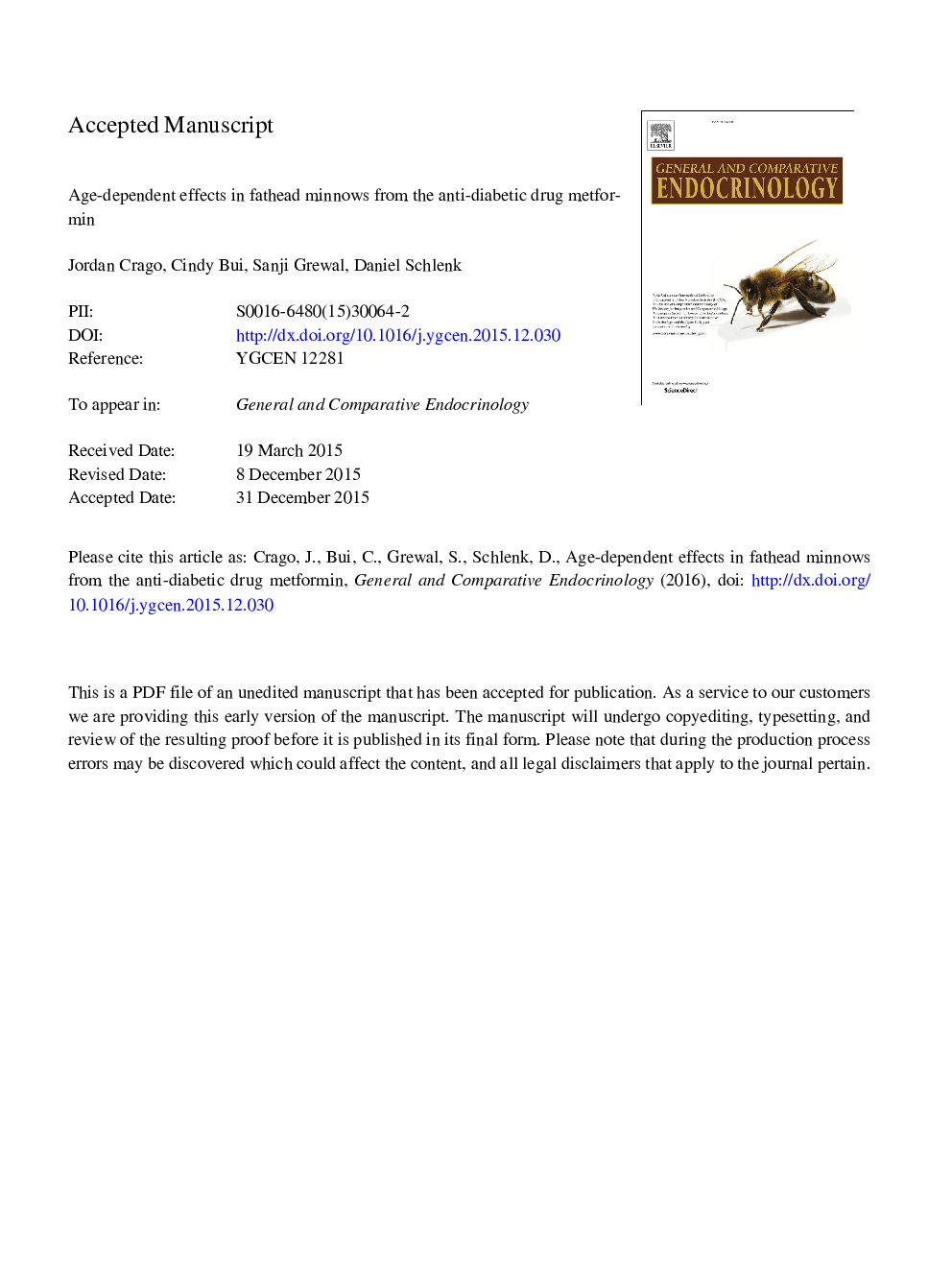| Article ID | Journal | Published Year | Pages | File Type |
|---|---|---|---|---|
| 5900824 | General and Comparative Endocrinology | 2016 | 23 Pages |
Abstract
The anti-diabetic drug metformin is thought to be the pharmaceutical most deposited into the aquatic environment by mass at up to 6 tons per year from individual WWTPs in urban areas. Recent studies have shown that exposure to 40 ug/L of metformin increased the relative expression of the egg yolk precursor protein vitellogenin in adult male fathead minnows (Pimephales promelas) (FHM). For this study, the expression of several other genes involved in estrogen biosynthesis, clearance and downstream effects were assessed in FHM after treatment to three concentrations of metformin, to better understand the estrogenic effects of metformin on FHM. In contrast to the previous study, although upward trends were observed, metformin failed to significantly alter the expression of VTG, ERα, GnRH3, and CYP3A126 in adult male FHM. However, a concentration-dependent response to metformin was observed in younger 80-90 day juvenile FHM. A 17.7-, 22-, and 22-fold increase in the relative expression of VTG mRNA in juvenile FHM exposed to 1, 10, and 100 μg/L as compared to the control was observed. There was also a 3.3-, 4.7-, and 5.5-fold increase in GnRH3 in juvenile FHM exposed to 1, 10, and 100 μg/L as compared to the control. Similarly, a 14-, 16-, and 24-fold increase in the relative expression of CYP3A126 mRNA was measured in juvenile FHM exposed to 1, 10 and 100 μg/L metformin as compared to the control. These results indicate that juvenile FHM were more susceptible to the estrogenic effects of metformin during a 7-d exposure than older, sexually mature male FHM.
Related Topics
Life Sciences
Biochemistry, Genetics and Molecular Biology
Endocrinology
Authors
Jordan Crago, Cindy Bui, Sanji Grewal, Daniel Schlenk,
